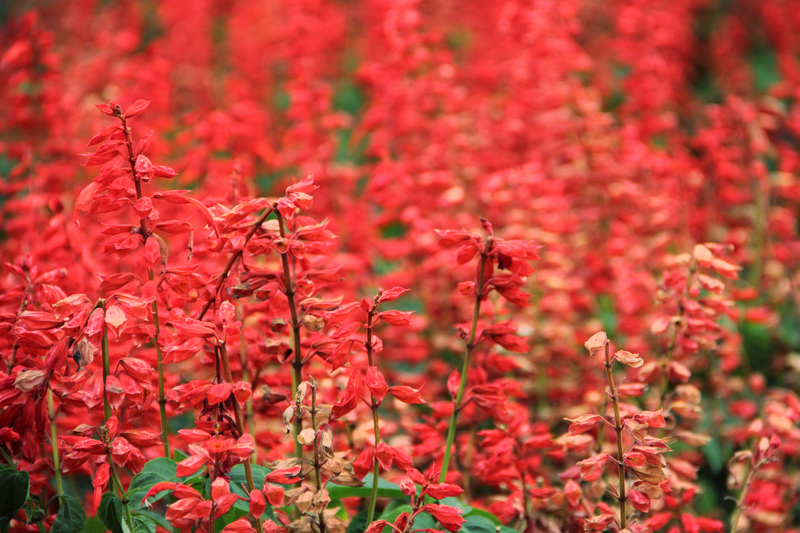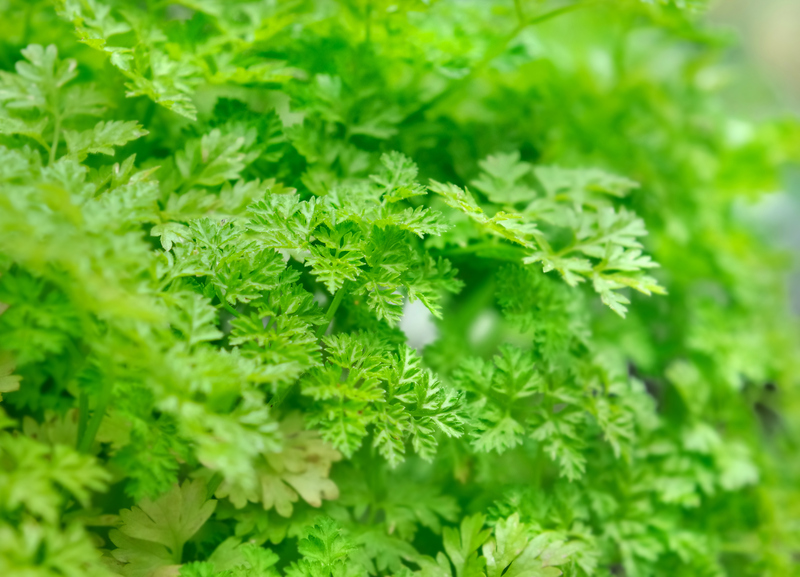Creating Masterpiece Gardens with Hedge Trimming Shapes and Techniques
Posted on 19/09/2025
Creating Masterpiece Gardens with Hedge Trimming Shapes and Techniques
A well-maintained garden is more than just a collection of plants - it's a living canvas where hedge trimming shapes and techniques transform outdoor spaces into mesmerizing works of art. Whether you're a seasoned gardener or a novice with shears, mastering the art of hedge sculpting can elevate your landscape from ordinary to extraordinary. In this comprehensive guide, we'll explore the key concepts, preparation steps, innovative shapes, and advanced techniques to help you create your own masterpiece garden with the art of hedge trimming.
Why Hedge Shaping is the Backbone of Remarkable Gardens
Ask any garden designer and you'll hear the same story: well-trimmed hedges are the silent architects of the most stunning gardens. Not only do expertly shaped hedges provide structure, privacy, and wind protection, but they're also the backbone of any formal or artistic landscape design. Hedge shaping introduces an element of timeless beauty, elevates curb appeal, and showcases the homeowner's creativity and care.
- Defines garden boundaries: Crisp, geometric lines give clarity and order.
- Creates focal points: Imaginative topiary and shapes draw the eye.
- Improves plant health: Proper trimming encourages dense growth and air circulation.
- Enhances privacy and shelter: Dense, shaped hedges serve as natural screens and windbreaks.
- Transforms everyday spaces: Artistic trimming techniques create visually dynamic landscapes.

Preparing for Hedge Trimming Success
Choosing the Right Plants for Shaping
Not all hedges are created equal. If you're aiming to create a masterpiece garden with hedge trimming, start by selecting species that respond well to pruning and training. Here are popular choices:
- Boxwood (Buxus): Classic for formal shapes and maze gardens.
- Yew (Taxus): Ideal for tall, thick privacy screens and topiary.
- Privet (Ligustrum): Fast-growing, easily maintained in curves or hedges.
- Lonicera nitida: Great for smaller, tightly clipped shapes and spheres.
- Holly (Ilex): Evergreen, dense growth, suitable for intricate forms.
- Laurel (Prunus laurocerasus): Robust, large-leaved for big structural hedging.
The Best Time to Trim Hedges for Shape and Health
Timing is critical for successful hedge pruning. Here's what professionals recommend:
- Deciduous Hedges: Late winter or early spring before new growth appears.
- Evergreen Hedges: End of spring or early summer; avoid hottest months.
- For intricate topiary, light trimming can continue throughout the growing season.
Tip: Never trim when there's a risk of frost to avoid dieback, and avoid autumn trimming which may stimulate late tender growth.
Essential Hedge Trimming Tools
Arm yourself with the right tools for both safety and the sharpest lines:
- Manual shears: For precision cuts and small shapes.
- Electric or battery-powered trimmers: Speeds up work on larger hedges.
- Topiary shears: Specialized short blades for detail work.
- Loppers and pruning saws: For thicker branches.
- Safety gear: Gloves, goggles, and ear protection are must-haves.
- Stakes, string, and templates
Classic and Modern Hedge Trimming Shapes
Traditional Hedge Forms
Symmetry and clean lines characterise classic hedge shapes. These forms suit both formal gardens and manicured residential landscapes. Some perennial favorites include:
- The Rectangle: A clean-cut, flat-topped and sided hedge; perfect for borders and privacy.
- The Ball: Spherical shapes ideal for focal points or lining pathways.
- Pyramids and Cones: Easy to achieve with tight-growing species like yew or boxwood.
- Tiered and layered hedges: Multiple heights add depth to gardens.
- The Pleached Hedge: Trees pruned and trained into hedged panels overhead or along fences.
Modern and Artistic Trimming Shapes
Masterpiece gardens increasingly feature creative hedge trimming designs:
- Cloud Pruning (Niwaki): Inspired by Japanese techniques, results in flowing, rounded forms that evoke clouds.
- Animal and Abstract Topiary: Transform hedges into living sculptures--birds, spirals, or geometric illusions.
- Wave and Ripple Hedges: Layers of undulating heights, reminiscent of rolling hills or waves.
- Lettering and Numbers: Perfect for personalized gardens or business landscapes.
Pro Tip: Start simple. Master rectangles and spheres before tackling complex topiary or freeform designs.
Step-by-Step Guide to Shaping Hedges Like a Pro
Planning Your Hedge Design
-
Sketch Your Ideas
Draft your shapes on paper, considering your garden's size and style. -
Mark Boundaries
Use stakes and strings to mark straight edges or main lines of your design. -
Select the Right Plants and Tools
Choose suitable hedge species and sharpen your shears!
Basic Trimming Technique
-
Start with the Sides:
- Always trim the sides before the top for better shape control.
- Hold trimmers level and move up in sweeping strokes.
-
Top the Hedge Last:
- Cut the top in straight motions, keeping it slightly narrower at the top if possible--this allows sunlight to reach the lower branches and encourages uniform growth.
-
Check Symmetry Often:
- Step back frequently, and use string or sticks as guides for straightness.
-
Refine and Clean Up:
- Collect trimmings and check for gaps or uneven sections, addressing them as needed.
Advanced Trimming and Topiary Techniques
Ready to go beyond basics? Here's how to use advanced hedge trimming techniques to create your own garden masterpiece:
-
Templates and Frames:
- Create or purchase metal or wire forms that guide shears for variable shapes and complex topiary.
-
Freehand Sculpting:
- After mastering basic forms, unleash creativity for animals and abstract patterns, using sharp shears and a steady hand.
-
Layered Cloud Pruning:
- Work from the base up and maintain separation between "clouds" for a floating effect.
-
Regular Pinching:
- Pinch new growth between fingers for delicate corrections without major cuts, perfect for small topiary.
Insider tip: Patience is essential. Artistic topiary may take years to reach maturity--treat your hedge as a living sculpture in constant evolution.
Common Hedge Trimming Problems and Solutions
-
Browning and bare patches:
Solution: Avoid cutting into old wood; prune little and often. Feed and water regularly. -
Uneven growth or bulging areas:
Solution: Use strings and templates for reference; correct in stages over several seasons. -
Damaged or diseased branches:
Solution: Remove carefully with sterile tools; disinfect blades between cuts. -
Thin bases:
Solution: Trim hedges so they are slightly wider at the base for even sunlight exposure. -
Pest infestations:
Solution: Regular inspection and early action with organic pesticides if needed.
Aftercare: Keeping Your Trimmed Hedges Healthy and Beautiful
Once you've shaped your masterpiece, ongoing care is key:
- Fertilize annually in spring with slow-release, balanced fertilizer.
- Water regularly, especially during dry periods or after major cuts.
- Mulch around base to retain moisture and suppress weeds.
- Monitor for pests and diseases; remove affected growth promptly.
- Trim consistently through the growing season to keep desired form.
Innovative Ideas for Incorporating Sculpted Hedges
The true joy of hedge artistry lies in experimentation. Here are some creative uses for sculpted hedges in gardens:
- Living mazes: Use rectangular or curved hedges to build walking mazes for children and adults alike.
- Framing ornaments or statues: Spherical or conical hedges draw attention to garden art.
- Combining with other elements: Mix trimmed hedges with loose perennial borders for visually rich contrasts.
- Hedge "windows" and "doorways": Cut archways or peek-a-boo holes into large hedges for whimsical paths.
- Seasonal displays: Integrate perennial flowers through gaps or under hedges for changing color and interest.
Environmental Benefits of Artistic Hedge Trimming
Beyond aesthetics, sculpted hedges offer significant ecological advantages:
- Wildlife habitat: Dense hedges provide nesting, food, and shelter for birds and pollinators.
- Air purification: Broadleaf evergreens filter dust and pollutants.
- Noise reduction and windbreaks: Thick hedges buffer wind and traffic sound, creating more pleasant outdoor spaces.
- Soil protection: Hedge roots help prevent soil erosion on slopes.

Frequently Asked Questions about Hedge Trimming Mastery
How often should I trim my hedges?
Frequency depends on species and shape complexity. Formal hedges may be trimmed 2-3 times per growing season; topiary shapes may require monthly touch-ups for crispness.
Can I revive an old, overgrown hedge?
Many species, like yew and privet, respond well to severe trimming (renovation pruning), but boxwood may not. It's wise to cut back in stages over several years for best results.
What's the minimum size a hedge needs for topiary?
Allow plants to reach at least 60-90cm (2-3 feet) in height and density before shaping into animals or complex forms. Patience ensures a healthy, lush result.
How do I avoid uneven or lopsided shapes?
Use string lines, stakes, and templates for guidance. Step back often to assess. Always trim gradually; you can take more off, but you can't put it back!
Conclusion: Designing Your Garden Masterpiece with Hedge Trimming Artistry
Achieving a masterpiece garden through hedge trimming is a blend of botanical knowledge, patient care, and creative artistry. With the right species, tools, and techniques, even beginner gardeners can transform unruly shrubs into stunning shapes that define and beautify their outdoor spaces. Whether you favor the formality of geometric lines or the whimsy of topiary, the possibilities of hedge shaping are endless. Begin with basic shapes, build confidence, and soon your garden will be the envy of the neighborhood--living proof that with vision and skill, horticulture is truly an art form.
Want to learn more about hedge trimming techniques or get inspiration for your next green creation? Explore our other guides or visit your local garden center experts for personalized advice.
Shape your hedges. Shape your world. Let your garden become your masterpiece!

